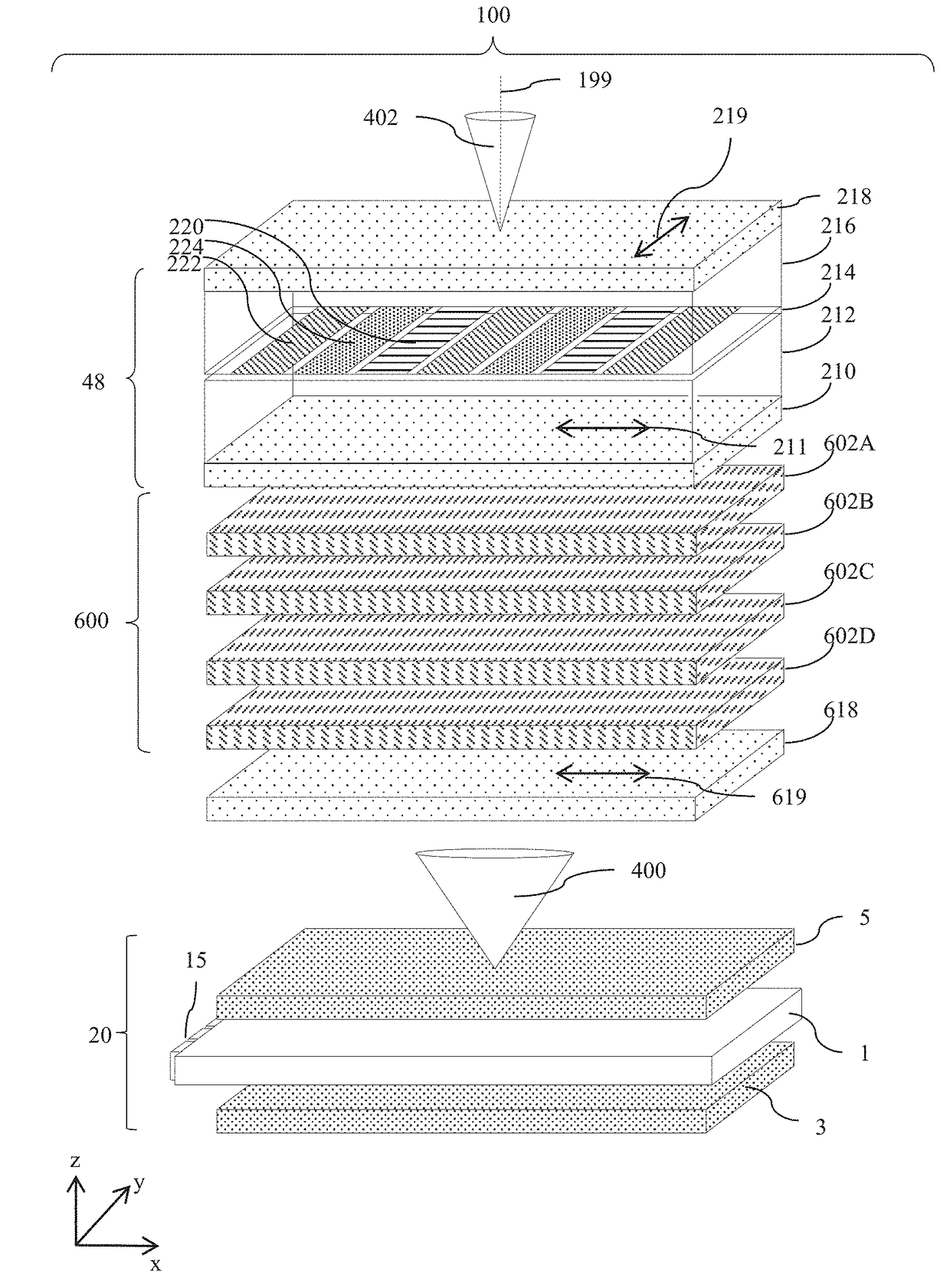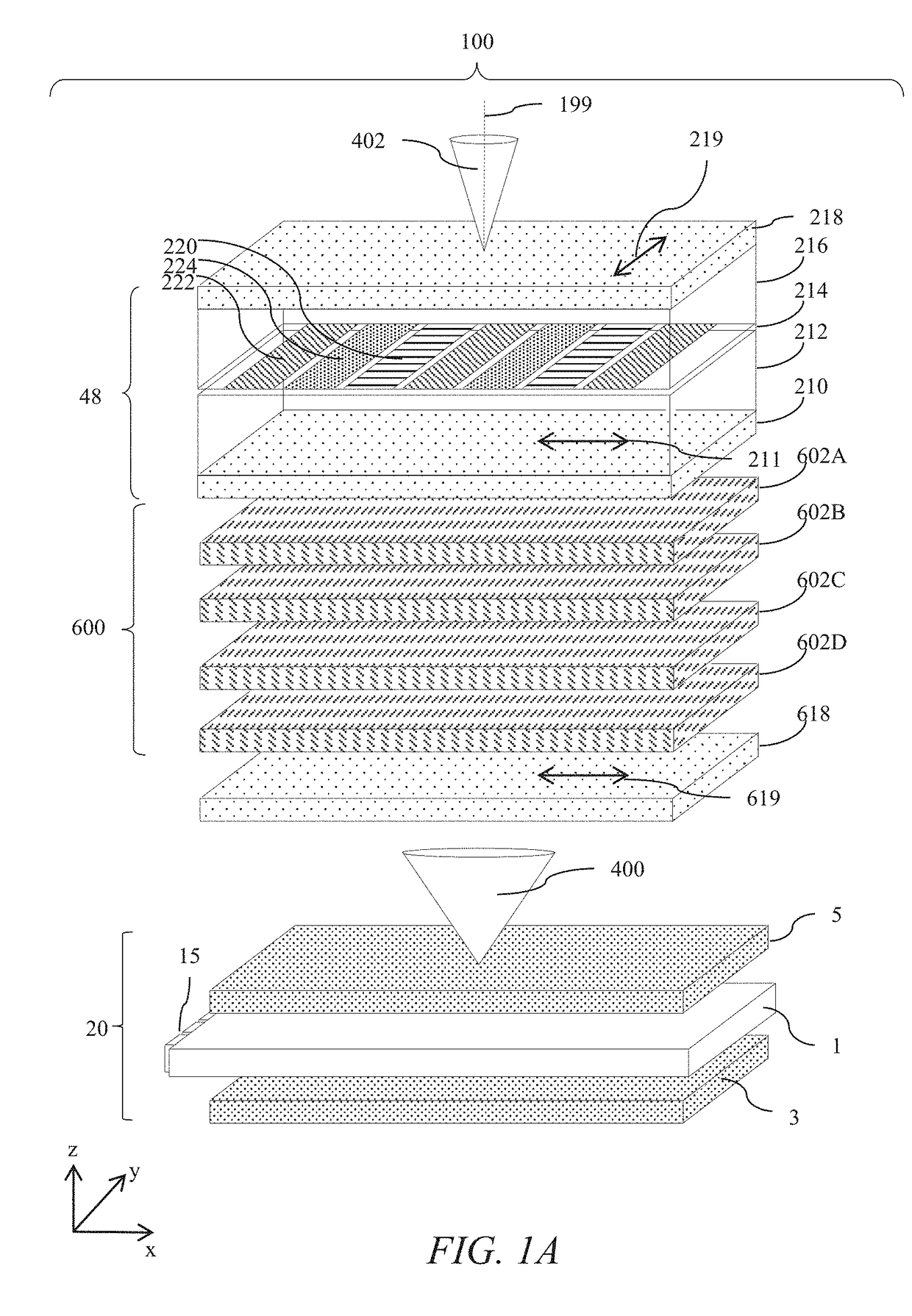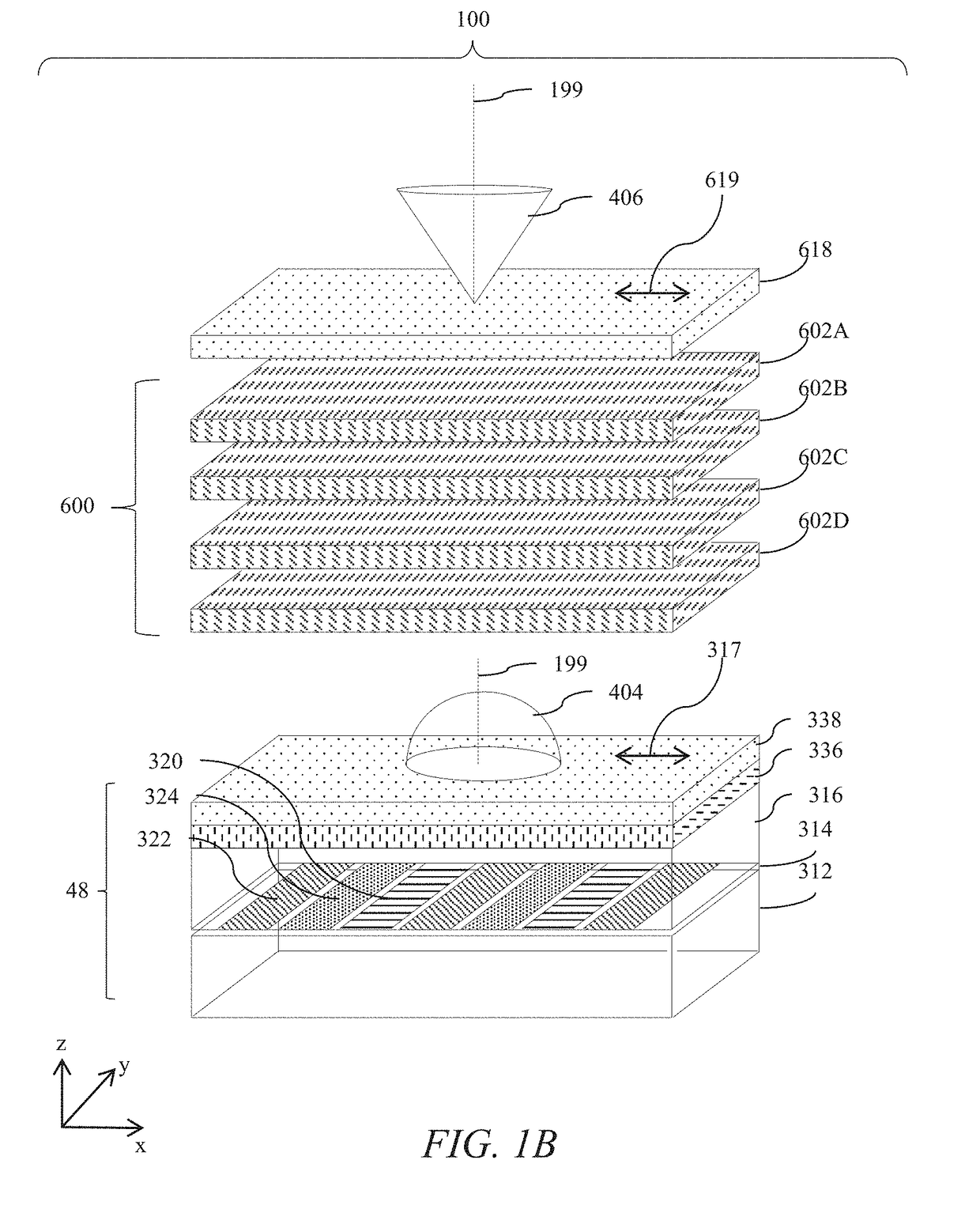Optical stack for directional display
a technology of optical stacks and directional displays, applied in the field of illumination, can solve the problems of increasing inventory and cost, high head-on illumination loss of films, moiré artefacts, etc., and achieve the effects of reducing the visibility of displayed images to off-axis users, and reducing the number of stray light to off-axis users
- Summary
- Abstract
- Description
- Claims
- Application Information
AI Technical Summary
Benefits of technology
Problems solved by technology
Method used
Image
Examples
Embodiment Construction
[0099]Terms related to optical retarders for the purposes of the present disclosure will now be described.
[0100]In the present embodiments, slow axis typically refers to the orientation orthogonal to the normal direction in which linearly polarized light has an electric vector direction parallel to the slow axis travels at the slowest speed. The slow axis direction is the direction of this light with the highest refractive index at the design wavelength.
[0101]For positive dielectric anisotropy uniaxial birefringent materials the slow axis direction is the extraordinary axis of the birefringent material. The ordinary axes in such materials are typically parallel to the normal direction, and orthogonal to the normal direction and the slow axis.
[0102]The terms half a wavelength and quarter a wavelength refer to the operation of a retarder for a design wavelength λ0 that may typically be between 500 nm and 570 nm. In the present illustrative embodiments exemplary retardance values are p...
PUM
| Property | Measurement | Unit |
|---|---|---|
| wavelength | aaaaa | aaaaa |
| wavelength | aaaaa | aaaaa |
| wavelength | aaaaa | aaaaa |
Abstract
Description
Claims
Application Information
 Login to View More
Login to View More - R&D
- Intellectual Property
- Life Sciences
- Materials
- Tech Scout
- Unparalleled Data Quality
- Higher Quality Content
- 60% Fewer Hallucinations
Browse by: Latest US Patents, China's latest patents, Technical Efficacy Thesaurus, Application Domain, Technology Topic, Popular Technical Reports.
© 2025 PatSnap. All rights reserved.Legal|Privacy policy|Modern Slavery Act Transparency Statement|Sitemap|About US| Contact US: help@patsnap.com



